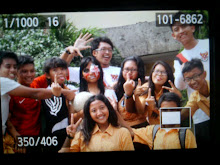The M1 Abrams is a third-generation main battle tank produced in
the United States. It is named after General Creighton Abrams, former
Army Chief of Staff and Commander of US military forces in Vietnam from
1968 to 1972. Highly mobile, designed for modern armored ground
warfare, the M1 is well armed and heavily armored. Notable features
include the use of a powerful gas turbine engine (multifuel capable,
usually fueled with JP8 jet fuel), the adoption of
sophisticated composite armor, and separate ammunition storage in a
blow-out compartment for crew safety. Weighing nearly 68 short
tons (almost 62 metric tons), it is one of the heaviest main battle
tanks in service.
The M1 Abrams entered U.S. service in 1980, replacing the M60 tank. It
served for over a decade alongside the improved M60A3, which had entered
service in 1978. The M1 remains the principal main battle tank of
the United States Army and Marine Corps, and the armies
of Egypt, Kuwait, Saudi Arabia, Australia, and Iraq.
Three main versions of the M1 Abrams have been deployed, the M1, M1A1, and M1A2,
incorporating improved armament, protection and electronics. These
improvements, as well as periodic upgrades to older tanks, have allowed
this long-serving vehicle to remain in front-line service. The M1A3 is currently under development.
The M1A2 was a further improvement of the M1A1 with a commander's
independent thermal viewer, weapon station, position navigation
equipment, and a full set of controls and displays linked by a digital
data bus. These upgrades also provided the M1A2 with an improved fire
control system. The M1A2 System Enhancement Package (SEP) added digital
maps, FBCB2 capabilities, and an improved cooling system to compensate
for heat generated by the additional computer systems. The M1A2 SEP also
serves as the basis for the M104 Wolverine heavy assault bridge.
Further
upgrades included depleted uranium armor for all variants, a system
overhaul that returns all A1s to like-new condition (M1A1 AIM), a
digital enhancement package for the A1 (M1A1D), and a commonality
program to standardize parts between the U.S. Army and the Marine Corps
(M1A1HC). |












0 komentar:
Posting Komentar